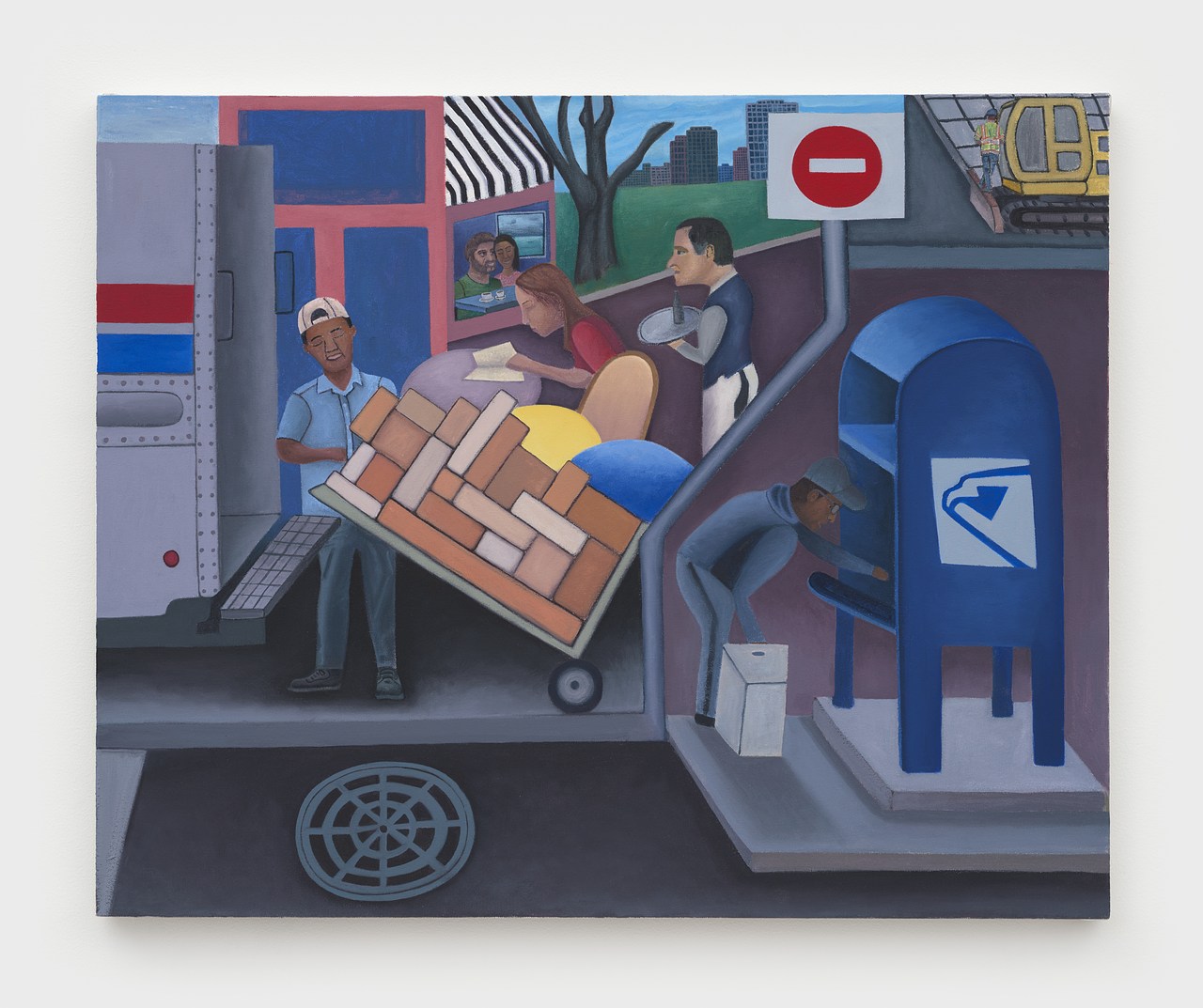Incompatibles (Unitas)
2019 - Textile (Textile)
190 x 150 x 0.5 cm
Hana Miletic
Incompatibles (Unitas) is made from discarded samples of the yarns that are exported from Croatia and not actually available in the local market. The textile industry in former Yugoslavia has essentially closed down under pressure from Indian and Chinese industries and as a result of the botched privatization of once state-owned factories. There is only one factory remaining in Zagreb producing these yarns. Certain colors are only available on the export market and it is these that Hana Miletic uses here, a political gesture pointing out the inequity of the system. These relics of a bygone industry represent both memory and the loss of work under a new political system, one which impacted older women workers most heavily. Miletic’s interest in weaving has matured into a highly politicized activity as well as a one that implicates body and mind. The artist sees weaving as a labor which moves from head to hand and back again. The design of Incompatibles (Unitas) resembles the utopian abstract works of the 1930s although they were not in her mind as she made it. Rather the process was to use the yarns in the order in which they came out of the bag and to make each rectangle as large as the amount of the yarn permitted. Thus the design is really quite random but determined by a systematic process. Miletic also recognizes their resemblance to Bauhaus type images.
Hana Miletic is a Croatian artist living in Brussels with a background in documentary and street photography. She uses photography as the basis for woven works, the fabric is an abstraction of what she has witnessed, a bringing of the outside inside, and serves as a kind of act of care and repair. Born in Zagreb in 1982 Miletic’s family were refugees from the former Yugoslavia. Her work resonates with memories of Croatia as well as dealing with the history of its culture. Her weaving practice began in 2015, she was both drawn to the precedence taken by material gestures over conceptual thinking and the intergenerational contact she had with women of different ages and cultural backgrounds. While primarily a craft and an artistic practice, weaving also has a social dimension, conceptually it allowed her to consider the metaphorical implications of binding together and repairing, both physically and psychologically. Although historically weaving is a male and a female occupation it is commonly associated with women’s work. Her adoption of this process for making art thus brings to the fore a feminist agenda, using a process normally associated with applied art to make fine art.
Colors:
Related works sharing similar palette
» see more

© » PRISHTINA INSIGHT
Hague Court Cuts Kosovo’s Commander Cali’s Sentence by Four Years - Prishtina Insight Home Kallxo Jeta në Kosovë Drejtësia në Kosovë Gazeta JNK Log In Subscribe News Features Opinion Guide Big Deal Archive Follow @prishtinsight Former Kosovo Liberation Army (KLA) Commander Salih Mustafa (R) appears for the first public hearing before the Kosovo Specialist Chambers, in The Hague, The Netherlands, 09 June 2021...

© » ARTS EQUATOR
SEE WHAT SEE: SEA AT SGIFF 2021 | ArtsEquator Thinking and Talking about Arts and Culture in Southeast Asia ArtsEquator Viewpoints November 28, 2021 By ants chua, Ruby Thiagarajan and Janiqueel (1,200 words, 4-minute read) In this edition of See What See, we review three films made by Southeast Asian directors and featuring Southeast Asia currently showing at the Singapore International Film Festival 2021 (SGIFF)...

© » THEARTNEWSPER
Artist Hajime Sorayama claims Beyoncé copied his work in Renaissance tour Art market Museums & heritage Exhibitions Books Podcasts Columns Technology Adventures with Van Gogh Search Search Intellectual property news Artist Hajime Sorayama claims Beyoncé copied his work in Renaissance tour The artist, known for his distinctive sexualised androids, took to Instagram to denounce what he claims are unauthorised uses of his work in the concert tour’s imagery Theo Belci 12 December 2023 Share Beyoncé performing in a mirrored, retrofuturist costume during her Renaissance World Tour Photo by Raph_PH, via Flickr The Japanese artist Hajime Sorayama has criticised superstar Beyoncé in an Instagram post, claiming the musician appropriated imagery from his trademark erotic robots in visuals and merchandise for her Renaissance tour—which grossed $575m and spawned a successful documentary ...
Related works found in the same semantic group
» see more

© » KADIST
Haegue Yang
2016A steel clothing rack adorned with turbine vents, Moroccan vintage jewelry, pinecones and knitting yarn, these heterogeneous elements are used here to create an exotic yet undefined identity within the work...

© » KADIST
Moshekwa Langa
2004Hybridized drawing is a continued exploration in Moshekwa’s practice, integrating elements of graffiti, thread and yarn to enrich his abstract drawings of maps and space...

© » KADIST
Vidya Gastaldon
2011Gastaldon has made a number of soft sculptures using materials associated with knitting and sewing that have alternately fetishistic, nightmarish or contemplative qualities...


